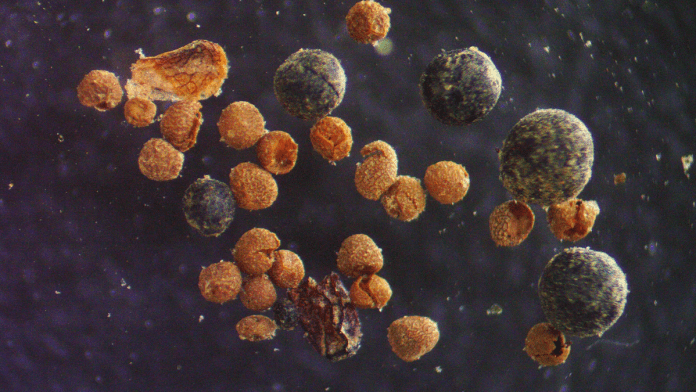🕒 Last updated on July 15, 2025
Greenland is renowned for its substantial ice sheet. It appears on satellite maps as a massive, immobile, frozen block. But a surprising discovery has shaken that image and raised serious concerns for coastal cities around the world.
Hidden Soil Under Ice Alarms Researchers
Scientists recently re-examined an ice core taken from the heart of Greenland in 1993. This ice core was drilled two miles deep—straight through thick glacial ice. For over 30 years, it sat in a freezer in Colorado. Unsurprisingly, scientists discovered remnants of a frozen tundra ecosystem at the very bottom of the core, fully preserved under almost two miles of ice.
These ancient fossils include plant seeds, insect parts, moss spores, and soil. They reveal something that wasn’t expected—central Greenland wasn’t always covered in ice. In fact, at one time, it had bare ground with small plants and bugs living on it. This suggests that Greenland’s thick ice sheet melted away at some point in the past and then returned.
Fossils Under Ice Tell a Troubling Story
The bottom three inches of the ice core held the secrets. There, buried under layers of frozen history, were tiny pieces of plant life and insect remains. This mix of soil and fossils, known as “till,” had never been moved. That means it was not pushed in by glaciers but had stayed in place for a very long time.
Researchers found things like arctic poppy seeds, willow buds, moss spores, and even parts of insects like compound eyes. These are signs of a tundra environment—a cold, dry place where some plants and bugs can live during short summers. The soil had also been capped with large boulders, showing that the land was once open to the sky before ice returned.
Foreign Powers Threatened as Greenland Cracks Down on Foreign Interference in Elections
What makes this so important is that it proves Greenland’s massive ice sheet has melted before—and could do it again. Some of the materials in the core are at least 250,000 years old, while others date back over a million years. This shows that during certain periods in Earth’s past, even the thickest ice on the planet was not strong enough to hold back rising temperatures.
Another ice core, taken 19 miles away at a place called Camp Century, also revealed plant remains—this time no older than 416,000 years. All of these clues show that Greenland’s ice has come and gone many times, depending on how warm the planet was.
Coastal Cities at Risk from Rising Seas
One of the biggest concerns is how this discovery connects to sea levels. Today, sea levels are rising by more than an inch every ten years. This rise is caused by two things: warmer ocean water taking up more space and glaciers melting into the sea. Greenland’s ice sheet is the second largest in the world, and if it melts completely, the oceans could rise by more than 23 feet.
That’s enough water to flood large parts of major cities like New York, Boston, Miami, and Mumbai. Even a few feet of sea-level rise can cause serious damage. Roads, homes, and whole neighborhoods along the coast could end up underwater.
Scientists who study climate and ice sheets say this new research adds proof that Greenland’s ice isn’t as permanent as it once seemed. Ancient soil and plant remains provide unmistakable proof that the middle of Greenland formerly had no ice. Plants grew there. Insects lived there. And now, those old signs of life are warning us about what could happen again.
The discovery doesn’t rely on computer models or estimates. It’s hard proof—real fossils from real ground, buried under miles of ice. If Greenland’s ice melted once, it might melt again. That’s the straightforward but important point.
The fragile state of the polar ice sheet is now a major focus for researchers. The findings are a reminder that Earth’s climate has changed before, sometimes very quickly. And the frozen core of Greenland is giving up secrets that might help us understand what lies ahead for our oceans and cities.
As scientists continue to study these ancient ice cores, one thing is clear—the ice holds more than just frozen water. It holds powerful warnings written in soil, seeds, and bugs from a time when the world looked very different.

